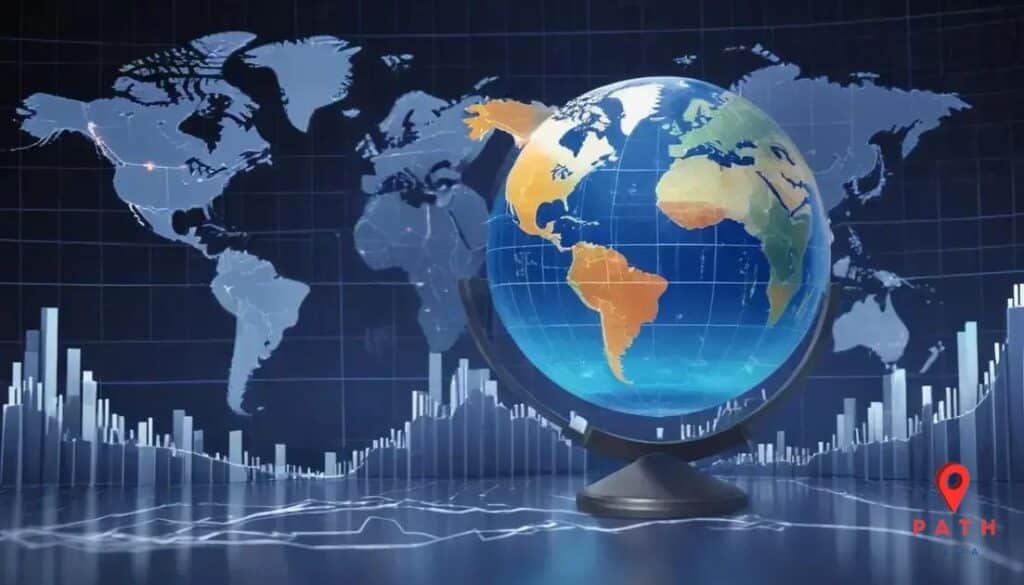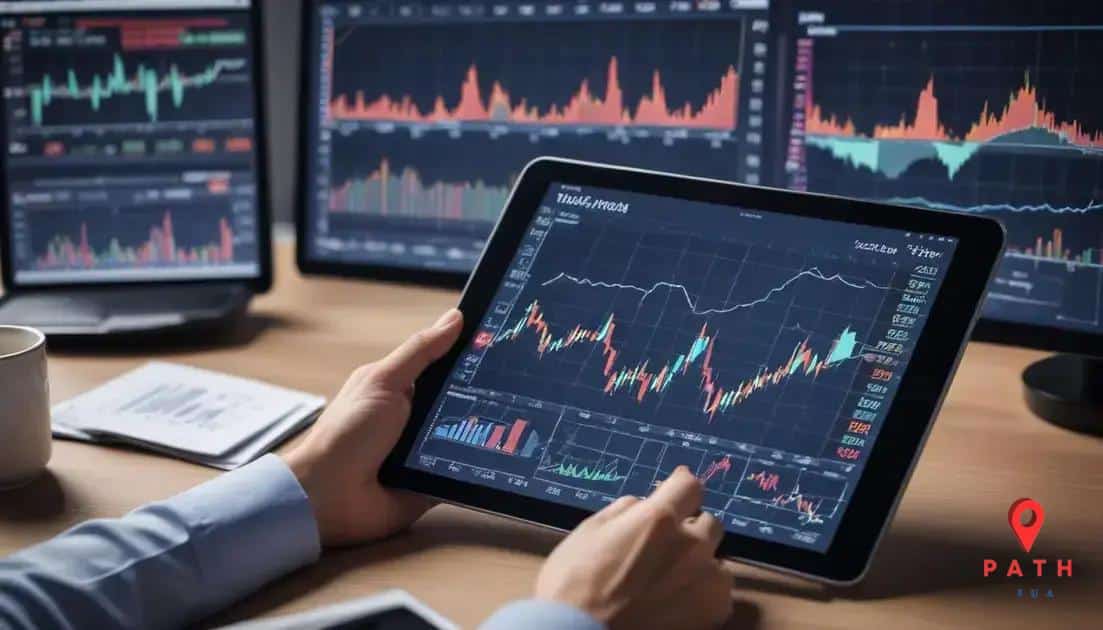Market volatility due to trade policies: what to expect

Anúncios
Market volatility due to trade policies can significantly impact investments and consumer prices, making it essential for investors to stay informed and adapt their strategies accordingly.
Market volatility due to trade policies is becoming a common concern for investors everywhere. With changes in policies affecting global trade dynamics, how does this impact your financial strategies? Let’s dive in.
| Aspect | Key Point | Impact |
|---|---|---|
| Volatility Basics | Price swings from uncertainty | Creates risk and opportunity |
| Trade Policy Types | Tariffs, quotas, agreements | Disrupt global supply chains |
| Investor Strategy | Diversify and set clear goals | Helps manage risk |
| Real-World Examples | US-China, Brexit, USMCA | Triggered major price shifts |
| Future Trends | Digital trade and sustainability | Shifts investment patterns |
Anúncios
Understanding market volatility
Understanding market volatility is crucial for anyone involved in investing or trading. It refers to the fluctuations in the market price of assets, often influenced by economic factors and investor behavior.
Volatility creates uncertainty, which can be unsettling for investors. However, it also presents opportunities for those who know how to navigate these changes.
Anúncios
Factors Contributing to Market Volatility
Several factors can increase market volatility, including:
- Economic indicators such as unemployment rates, inflation, and GDP.
- Global events like political unrest or natural disasters.
- Changes in trade policies that can disrupt supply chains.
When these events happen, they can lead to sudden price movements in stocks and commodities. Staying informed about these factors is vital for making sound investment decisions.
For more in-depth information, visit the SEC website for resources on market trends and investor education.
Key trade policies impacting markets
Key trade policies are crucial in shaping market conditions and can significantly impact economic stability. These policies dictate how countries conduct trade with one another, affecting prices and availability of goods.
When governments adjust trade policies, markets can react quickly, leading to fluctuations in stock prices and shifts in investor confidence.
Types of Key Trade Policies
There are several types of trade policies that can influence markets:
- Tariffs: These are taxes imposed on imported goods, which can raise prices and change consumer behavior.
- Quotas: Limits on the amount of a product that can be imported, affecting supply and pricing.
- Trade Agreements: Agreements between countries to facilitate trade by reducing barriers.
Understanding how these policies affect the market can help investors make informed decisions. For more detailed insights on trade policies, check the World Trade Organization (WTO) website.
Strategies for investors during volatility

Investors often face challenges during periods of market volatility. However, having effective strategies can make a significant difference in managing risk and maximizing returns.
During volatile times, it’s essential for investors to remain calm and focused on their long-term goals.
Key Strategies for Navigating Volatility
Here are some strategies to consider:
- Diversification: Spread investments across different asset classes to minimize risk.
- Stay Informed: Keep up with market trends and economic news to make informed decisions.
- Set Clear Goals: Define your investment objectives and time horizon to stay on track.
Investors should also consider consulting with a financial advisor for personalized guidance. For more information on investment strategies, visit the SEC’s Investor.gov.
Real-world examples of trade policy changes
Real-world examples of trade policy changes show how these shifts can directly impact economies and markets. Understanding these examples helps investors anticipate potential market reactions.
Examining specific cases provides insight into the ripple effects of trade policies around the world.
Examples of Trade Policy Changes
Here are notable instances that highlight the impact of trade policy changes:
- US-China Trade War: The imposition of tariffs by the U.S. on Chinese imports led to increased prices for consumers and disrupted supply chains.
- Brexit: The UK’s departure from the EU resulted in new trade agreements and tariffs, affecting numerous sectors including agriculture and manufacturing.
- NAFTA to USMCA: The transition from NAFTA to the United States-Mexico-Canada Agreement brought changes in labor laws and tariffs, impacting trade volumes among the three countries.
For more detailed analysis and resources, visit the U.S. Department of Commerce website.
Future trends in trade and market stability
Future trends in trade and market stability are essential to understand for investors and businesses. As global dynamics change, these trends can lead to both opportunities and challenges.
Monitoring emerging patterns will help stakeholders make informed decisions and adapt to shifting market conditions.
Anticipated Trends in Trade and Market Stability
Here are some projected trends to watch:
- Increased Digital Trade: The rise of e-commerce and digital platforms will continue to shape how goods are traded globally.
- Focus on Sustainability: Environmental considerations will drive trade policies, emphasizing green practices and sustainable products.
- Regional Trade Agreements: Countries may turn to more localized agreements to boost economic resilience amidst global uncertainties.
For more insights into future market trends and economic forecasts, refer to the International Monetary Fund (IMF).
In summary, understanding trade policies and market volatility is key
Trade policies play a significant role in shaping market stability and can affect investments, consumer prices, and economic growth.
By staying informed about trends and examples of trade policy changes, investors can make smarter choices that align with their goals. Strategies like diversification and remaining aware of global events can help navigate volatility.
As we look to the future, acknowledging the trends in trade and market stability will empower businesses and investors alike to adapt and thrive.
Thus, being proactive and informed can transform challenges into opportunities in the ever-evolving marketplace.
FAQ – Frequently Asked Questions about Trade Policies and Market Volatility
How do trade policies affect market stability?
Trade policies can influence supply and demand, consumer prices, and overall economic growth, thereby impacting market stability.
What strategies can investors use during market volatility?
Investors can diversify their portfolios, stay informed about economic trends, and set clear investment goals to navigate market volatility.
What are some real-world examples of trade policy changes?
Notable examples include the US-China trade war, Brexit, and the transition from NAFTA to USMCA, each impacting various markets significantly.
How can I prepare for future trends in trade?
Stay updated on global economic developments, focus on sustainability, and be open to regional trade agreements to better prepare for future trends.